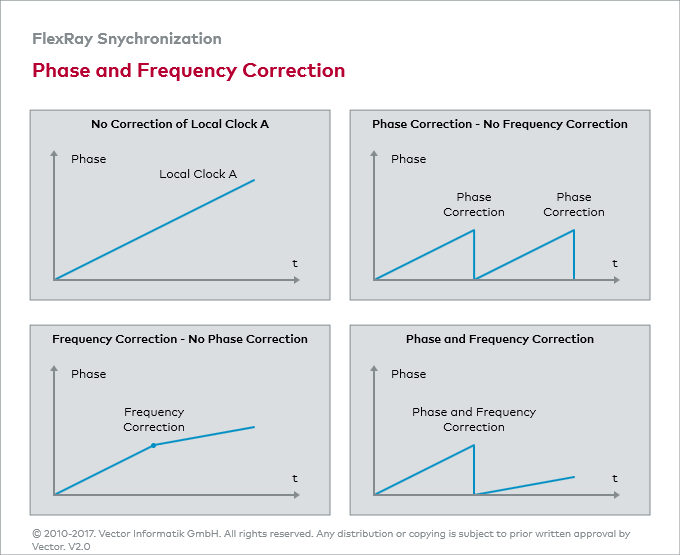Phase and Frequency Correction
Phase correction ensures that the local clocks of the FlexRay nodes have the same phase and the communication cycles always begin at the same time. Without additional correction mechanisms, a system layout would always have to be based on the maximum deviation of the local clocks.
That would mean that with a maximum deviation of 3000 ppm for any two of the local clocks and a cycle time of 10 milliseconds, for example, at the end of the cycle, 30 microseconds of drift would accumulate, which would reduce the maximum possible data rate considerably.
An improvement in bandwidth efficiency of time-triggered communication systems can be achieved by the supplemental use of frequency correction. While phase correction only treats the symptoms of frequency deviation, frequency correction addresses the cause of frequency deviation.
However, this is not at all easy, because the frequency of a crystal oscillator cannot be modified directly. Therefore, a frequency divider comes into play, which converts the crystal oscillator frequency into the local time base of the FlexRay node. By modifying the division ratio, it is possible to accelerate or slow the local clocks so that in the end the communication cycles are equally long for all FlexRay nodes.
Because nearly all of the local clocks run at the same speed, as a result of the frequency correction, the deviations of the local clocks stay within definable limits; despite transient interference due to the synchronization messages required for synchronization over multiple communication cycles. The use of frequency correction makes clock synchronization in a FlexRay cluster extremely robust against transient disturbances. Failure of clock synchronization can be tolerated over multiple communication cycles.

